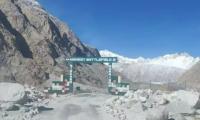FROM H-BOMB FATHER Edward Teller to Microsoft founder Bill Gates, for decades inventors have been churning out wild ideas to stop hurricanes before they hit land. Teller once suggested detonating a nuclear weapon to blow the storm off course, while Gates patented a series of pumps to push warm water down and cooler water up; neither plan got much traction.
The latest scheme—this one from Norway—proposes stretching a submerged “bubble net” across the path of an oncoming storm. To OceanTherm CEO Olav Hollingsæter, a hurricane’s swath of destruction could be slowed or even avoided using a technique that has kept Norwegian fjords ice-free since the late 1960s.
Imagine a long, thin, flexible pipe stretched between two ships. The pipe is moored a few hundred feet below the surface, like an upside-down shower curtain. A massive stream of bubbles escapes from the pipe, forming a frothy white current as it rises to the surface. That might give you an idea of what the creators of this project are envisioning.
Hurricanes gain their energy from warm surface waters, in the process adding moisture to the air. Hotter surface water leads to more moisture. Hollingsæter, a retired submariner, says the upward current of bubbles would push cooler water to the ocean surface, in theory robbing the hurricane of its energy. “If we were able to avoid the water being so hot,” says Hollingsæter, “the hurricanes won’t be able to build such strength. They all disappear when they come into colder water.”
In Norway, OceanTherm already uses its bubble net technology to keep ice away from two power plants situated along the water’s edge. In these narrow deep channels along the Norwegian coast, the bubble technology sort of works in reverse. There, they submerge a 1,500-foot long metal tube about 180 feet deep, force compressed air into the tube from a surface ship, and the escaping bubbles rise aloft, bringing warmer and saltier water from the depths to mix with colder freshwater on top.
Divers discover lost WWI warship HMS Nottingham 109 years later
Scientists have invented system to convert water and dust from Moon into fuel
It has been suggested that low vitamin D might lead to heart diseases
Qualcomm all set to host first Snapdragon Auto Day
In recent study, scientists has unveiled the side effects of clean air
'Rich Dad Poor Dad' author Robert Kiyosaki predicts future of crypto market







